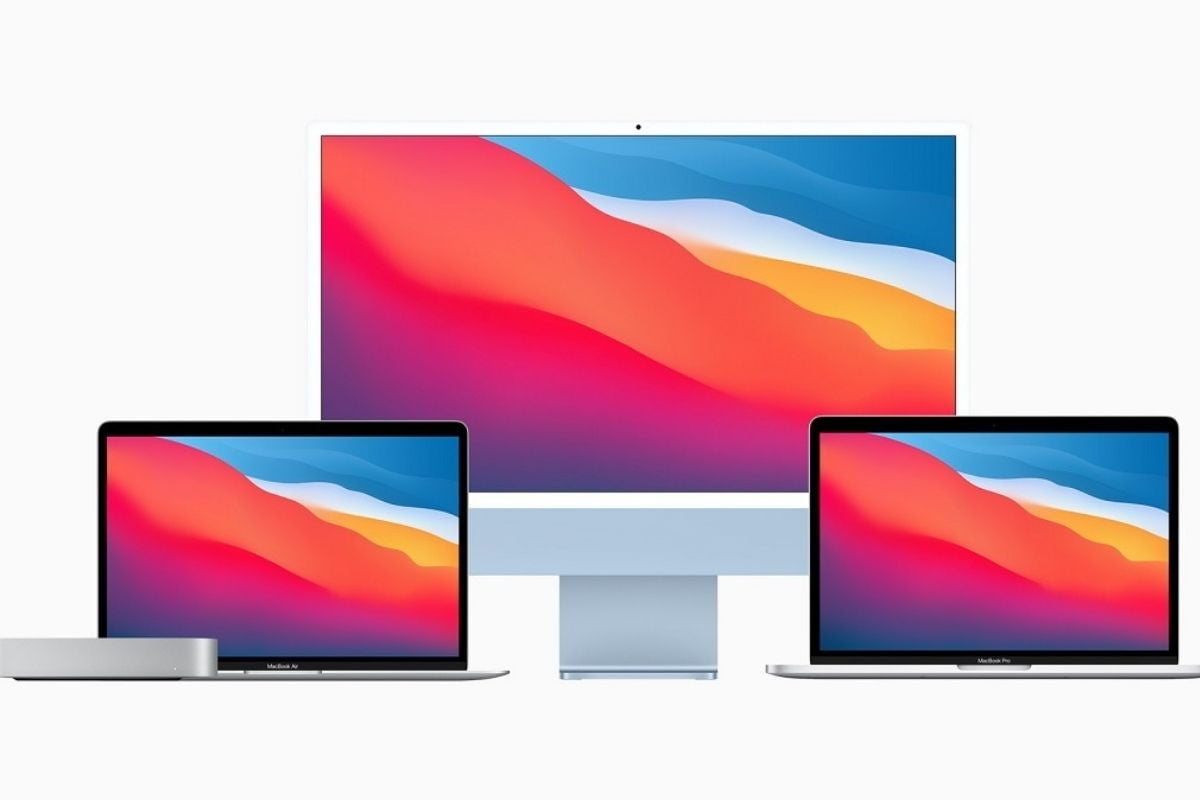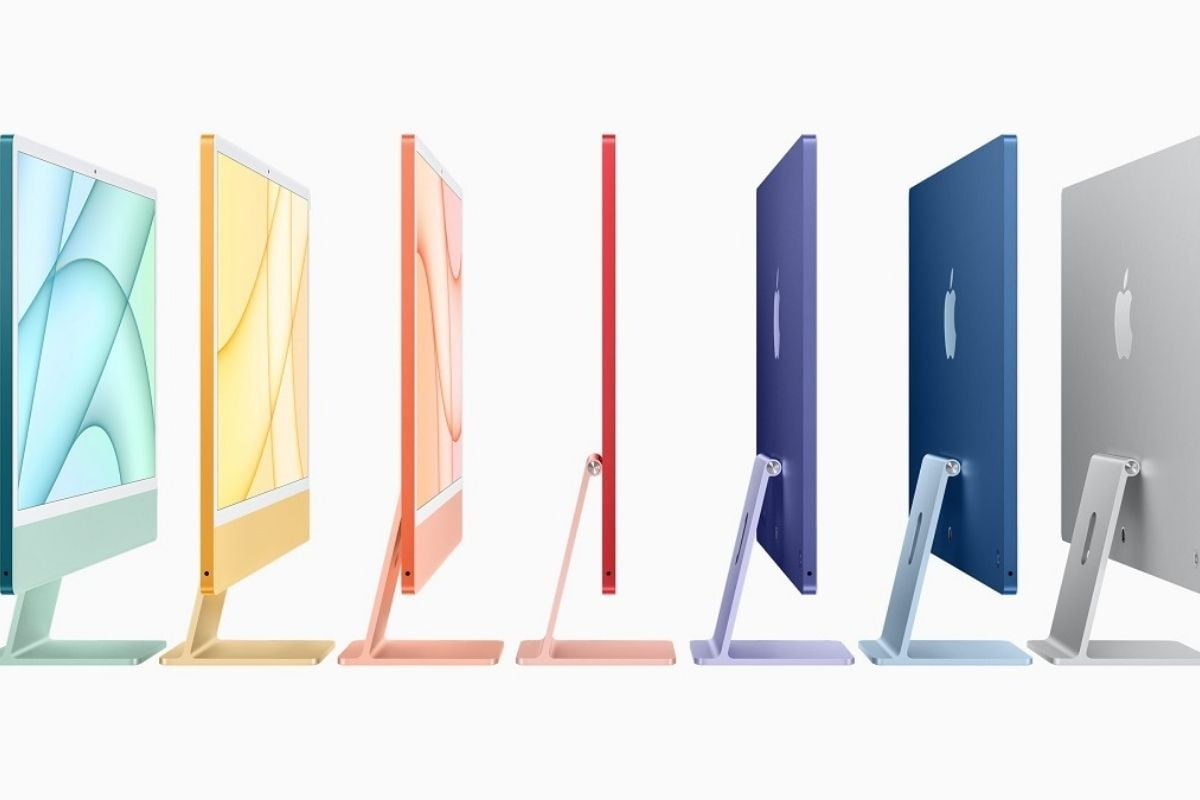Apple’s Spring event was one full of fanfare and attention that every brand would envy. The Cupertino based tech giant introduced a new purple hue for the iPhone 12 and 12 Mini, the new iPad Pro and the company’s latest accessory, the AirTags. In the middle of all this, however, we saw a product that is one of high stature in the coveted Apple ecosystem - the iMac, which received a well-deserved upgrade. On the surface of this, one would be forgiven for thinking there was not much different. So, is the iMac 2021 nothing but a fresh design and a few coats of paint, or is there more to it than meets the eye? Read ahead to find out.
Apple iMac 2021: Upgrades Galore?
One might think that the iMac 2021 offers nothing new to the table apart from a quirky looking bezel for the display and a fresh coat of paint, but in reality, there are a lot of new changes made to the iMac 2021. These updates are quite major, most of them impacting the way the user engages with the iMac. Key areas that are affected include media consumption, performance and overall usability. Without any further discussion, let us dive deeper into what sets the iMac 2021 apart and how it differs from its 2020 Intel version.
1. Performance: Another Addition To The M1 Family
Apple first launched its homemade desktop and laptop CPU, the M1 chip inside the Mac Mini and MacBooks, in 2020, but it was only a matter of time before they arrived for the entire Mac family. It seems Apple finally decided that the time has come to unite the entire Mac family in terms of performance, with the 2021 24-inch iMac boasting the ARM-based processor offering faster speeds than its intel predecessor while also producing less heat and requiring less cooling. All of this also had an impact on the design, which will be discussed in the latter half of the article. Coming back to the chip, the thermal system has been replaced by two tiny fans. All of this, according to Apple, accounts for up to an 85% increase when it comes to CPU speeds. The SoC layout of the M1 chip also means that the chip offers graphics acceleration, hinting towards boosted power for the GPU. As per Apple, the GPU performance will increase by 50-200% depending on the scenario and application in use. Everything is not as shiny as it seems, however, since the M1 has minor implications with support, wherein non-native M1 applications might act up. This is not a common occurrence, but one that ought to be mentioned nonetheless.
2. Display: New Size and Controversial Bezels
The display is another area where the iMac brings with it some fairly major changes. For starters, the display is 24.5-inches in size, placing the new iMac in between the sizes of the previous two models. As for the specification side of things, the new iMac sports a 4.5K Retina display (4480x2520 pixels) in comparison to the older model’s 5K display. The peak brightness remains the same at 500 nits, so the display tech is essentially the same. Another key change is the form factor, which shows that a bigger screen has been fit into a smaller chassis owing to slimmer bezels. The iMacs of the past have usually featured thick, bold bezels, whilst in this model, the bezels have been trimmed and are white in colour, providing a stylish yet slightly controversial look. The final display related upgrade is technically not associated with the display; rather, it is located on the top bezel. This is the new 1080p webcam which boasts of a larger sensor and support for FaceTime. The 2021 model is capable of offering superior picture quality during a global pandemic, where video calls have become the new normal. Add to this the M1 chip, which works with a software suite built within to provide sharper details.
3. Degraded Accessibility: Fewer Ports
A key aspect of a personal computer is accessibility when it comes to connectivity, something that is by some margin dependent on the availability of ports. For the new iMac 2021, Apple has chosen to provide two USB Type-C ports with support for Thunderbolt 3 (Base variant). In comparison, the higher $1,499 variant includes two additional USB-Type C ports (these two lack Thunderbolt support) as well as an Ethernet-abiding power adapter. There is also a headphone jack, but due to the slim chassis, it is located to the left of the body. This is a bit of a downgrade in comparison to the iMac 2020, which offered two USB-C ports, four USB-A ports, an Ethernet jack and an SD card slot. It seems Apple wishes for its users to focus on USB-C peripherals, as is evident by the focus on USB-C rather than USB-A. The headphone jack was earlier located towards the rear. For content based creators, it seems that they might have to go with a dock, given that they actually require multiple accessories that might not be USB-C compatible. As for Apple’s own offerings, the company promises colour matched keyboards and wireless mice for the new iMac. The keyboard is a very useful accessory since it brings a feature that has been absent from the previous mac. This feature is the inclusion of Touch ID, which offers ease of signing in and enhanced security.
4. New Design: An Artist’s Dream
The biggest change for the new iMac, which has also been the centre of the immense debate, is the design itself. One does not need to look at more than the launch event to notice the most obvious change to the new iMacs. Not only do the products offer a slimmer chassis which would confuse one as to how the iMac could be so slim, but they are also complemented with a host of colours that surpass the plain old silver of the past. Taking one look at the new iMac will send one to a trip down memory lane, back to the time of the old, translucent tinted plastic iMac with a squat CRT-based design.
One would be apt to describe it as a modern take on the older iMac, with a slimmer design, which in a way pays homage to the iMac of the olden days. As mentioned earlier, to compliment this new design, Apple will be shipping colour-matched accessories so that every aspect appears to be in sync. Also, the power cable is now magnetic and is six feet long. In terms of the colours on offer, users can choose from green, yellow, red, orange, purple, pink, blue and classic silver. Overall, the design is merely 0.45-inches thick, appearing wafer-like from the side profile. Whilst the older mac was by no means a thick computer, the 2021 version takes things to another level, as, according to Apple, the volume decrease is rated at a whopping 50%.






